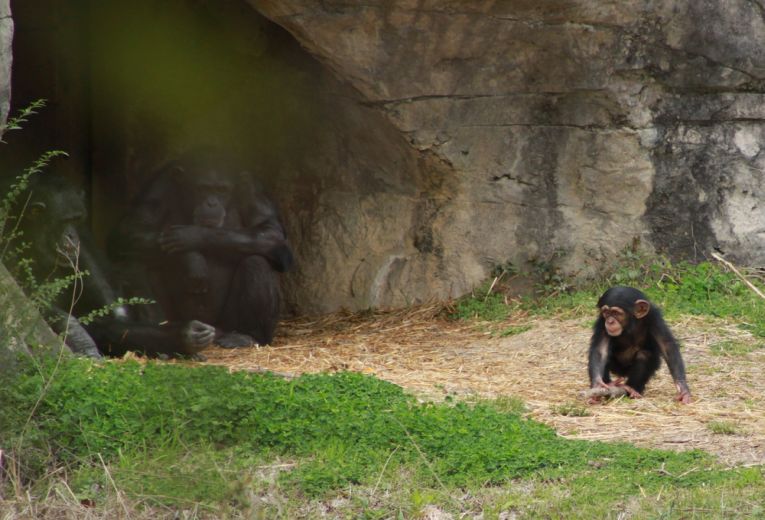Brains are big, life is long and they take up a lot of space. Not just humans, but all of the great apes. Energy is needed to supply those great bodies and brains and lactation takes its toll on females, so the diet tells us everything we need to know about their energy needs. Ripe fruit in the rainforest is the answer for chimpanzee, while gorilla avoid that problem by having gigantic guts. Later models of hominin developed more omnivorous habits and teeth linked to at least some terrestrial hunting activity.
Sherry V. Nelson of the University of New Mexico has managed to interpret the ecology of several apes and hominins by investigating the carbon and oxygen isotopes present in their tooth enamel. This resilient material lasts so well that fossil teeth often have it well preserved, while modern species are resplendent with their white enamelling. Fruit-eating, leaf-eating and more omnivorous diets are all indicated by the isotopes. Sherry presents the paper in the Proceedings of the Royal Society B.
In some Miocene apes like Sivapithecus, chimpanzees from Uganda and an Ethiopian hominin called Ardipitheus, the amount of terrestrial feeding and the degree of frugivorous feeding (or fruit eating) can be assessed. They are all very closely related at least in their niches. How much time did they spend in the trees and how well adapted were they for bipedalism? The chimpanzee, Pan troglodytes, is much less frugivorous than the sister-species , the bonobo, Pan paniscus for example, but does that mean the bonobo is more tied to forest habitat?
Ardipithecus should appear different from the earlier Miocene apes because it has more human characteristics. In fact, it has terrestrial and arboreal feeding indications, with a wide range of oxygen-18 values in the specimens obtained. This could mean it has a variable niche. Forest floor feeding in an African forest at Kibale showed warthogs with most oxygen-18 isotope. The arboreal fruit eaters or frugivores included the chimpanzee, while leaf eaters comprised two species of colobus monkey. Indications about the ape, Sivapithecus show a preference for arboreal feeding on fruits, possibly higher in the canopy than chimpanzee.
What does spring to mind is that swinging below branches is common in apes. The skeletal modifications that ancient apes had not developed now appear in all modern species. The ancient apes may have been terrestrial, but not it seems in the case of Ardipitheus. Hominins themselves generally become bipedal at the time of Homo erectus. This evidence could be the first available to give us some idea of how terrestrial the ancestors of Homo erectus were. This is because we often only have their skull fragments, so the post-cranial skeleton can give no clues. What we need to know is did they eat fruit, leaves, insects or how much did they hunt, on the flat or in trees?










